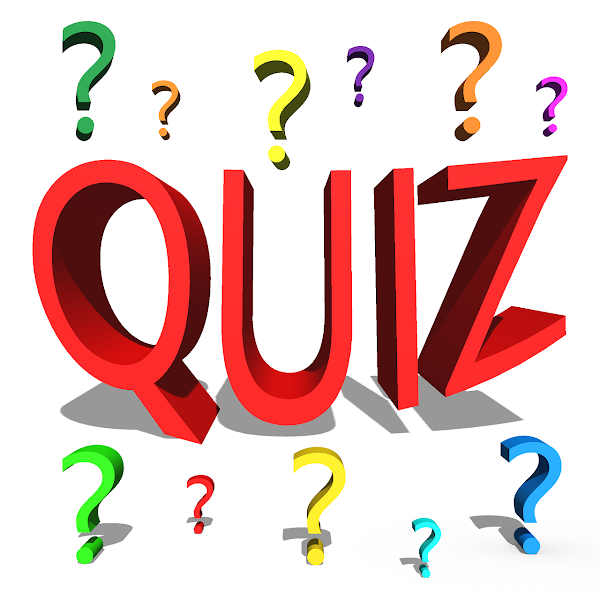9th Maths 7.1
NCERT Class 9th solution of Exercise 7.2
NCERT Class 9th solution of Exercise 6.1
Exercise 7.1
Q1. In quadrilateral `ABCD`, `AC=AD` and `AB` bisects `angleA` (see given figure). Show that `triangleABCcongtriangleABD`. What can you say about `BC` and `BD`?
In `triangleABC` and `triangleABD`
`AC=AD` [Given]
`angleCAB=angleBAD` [`AB` is bisect `angleA`]
`AB=AB` [Common]
`triangleABCcongtriangleABD` [By `SAS` rule]
`BC=BD` [`CPCT`]
Proved.
Q2. `ABCD` is a quadrilateral in which `AD=BC` and `angleDAB=angleCBA` (see given figure). Prove that
i) `triangleABCcongtriangleBAC`
ii) `BD=AC`
iii) `angleABD=angleBAC`.
i) In `triangleABD`and `triangleBAC`
`AD=BC` [Given]
`angleDAB=angleCBA` [Given]
`AB=AB` [Common]
`triangleABDcongtriangleBAC` [By `SAS` rule]
ii) `triangle ABCcongtriangleBAC` [Proved in (i)]
`BD=AC` [CPCT]
Proved.
iii) `triangleABDcongtriangleBAC` [Proved in (i)]
`angleABD=angleBAC` [CPCT]
Proved.
Q3. `AD` and `BC` are equal perpendicular to a line segment `AB` (see given figure). Show that `CD` bisects `AB`.
In `triangleAOD` and `triangleBOC`
`BC=AD` [Given]
`angleDAO=angleCBO=90^circ` [Given `BC⊥AB`, `AD⊥AB`]
`angleDOA=angleCOB` [Vertically opposite angles]
`triangleAODcongtriangleBOC` [By `S``A``A` rule]
`AO=OB` [CPCT]
So that `CD` bisect `AB`.
Proved
Q4. `l` and `m` are two parallel lines `p` and `q` (see given figure). Show that `triangleABCcongtriangleCDA`.
In `triangleABC` and `triangleADC`
`l∥m` and `AC` is transversal.
`angleACB=angleDAC` [Alternate angles]
`AC=AC` [Common Side]
`p∥q` and `AC` is transversal.
`angleBAC=angleACD` [Alternate angles]
`triangleABCcongtriangleADC` [By `ASA` rule]
Proved.
Q5. Line`l` is the bisector of an angle `angleA` and `B` is any point on `l`. `BP` and `BQ` are perpendiculars from `B` to the arms of `angleA` (see given figure). Show that:
ii) `BP=BQ` or `B` is equidistant from the arms of `angleA`.
Sol. :
i) In `triangleAPB` and `triangleAQB`
`angleBAP=angleBAQ` [Line `l` bisect `angleA`]
`angleAPB=angleAQB` [`BP⊥AP` and `BQ⊥AQ`]
`AB=AB` [Common]
`triangleAPBcongtriangleAOB` [By `S``A``A` rule]
ii) `triangleAPBcongtriangleAQB` [Proved in (i)]
`BP=BQ` [CPCT]
Proved.
Q6. In the given figure `AC=AE, AB=AD` and `angleBAD=angleEAC`. Show that `BC=DE`.
In `triangleABC` and `triangleADE`
`AB=AD` [Given]
`AC=AE` [Given]
`angleBAD=angleEAC` [Given]
We add `angleDAC` both sides]
`angleBAD+angleDAC=angleEAC+angleDAC`
`angleBAC=angleDAE`
`triangleABCcongtriangleADE` [By `SAS` rule]
`BC=DE` [CPCT]
Proved.
Q7. `AB` is a line segment and `p` is its mid-point. `D` and `E` are points on the same side of `AB` such that `angleBAD=angleABE` and `angleEPA=angleDPB` (see given figure). Show that
ii) `AD=BE`
Sol. :
i) In `triangleDAP` and `triangleEBP`
`AP=PB` [`P` is mid point of `AB`]
`angleAPE=angleBPD` [Given ]
We add `angleEPD` both sides
`angleAPE+angleEPD=angleBPD+angleEPD`
`angleAPD=angleBPE`
`angleDAP=angleEBP` [Given]
`triangleDAPcongtriangleEBP` [By `ASA` rule]
ii) `triangleDPAcongtriangleEBP` [Proved in (i)]
`AD=BE` [CPCT]
Proved.
Q8. In right triangle `ABC`, right angled at `C, M` is the mid-point of hypotenuse `AB`. `C` is joined to `M` and produced to a point `D` such that `DM=CM`. Point `D` is joined to point `B` (see given figure). Show that :
ii) `angleDBC` is a right angle`
iii) `triangleDBCcongtriangleACB`
iv) `CM=frac(1)(2)AB`.
Sol. :
i) In `triangleAMC` and `triangleBMD`
`AM=BM` [Given]
`CM=DM` [Given]
`angleCMA=angleBMD` [Vertically opposite angles]
`triangleAMCcongtriangleBMD` [By `SAS` rule]
Proved.
ii) `triangleAMCcongtriangle` [Proved in (i)]
`angleACM=angleBDM` [CPCT]
above angles are Alternate angles,
so that `DB∥AC`
`angleDBC+angleACB=180^circ` [interior angles of same side]
`angleDBC+90^circ=180^circ` [`angleACB=90circ`]
`angleDBC=180^circ-90^circ`
So that `angleDCB` is a right angle.
Proved.
iii) `triangleAMCcongtriangleBMD` [Proved in (i)]
`AC=BD` [CPCT]
In `triangleDBC` and `triangleACB`
`BD=AC` [Proved]
`angleDBC=angleACB=90^circ` [Proved in (ii)]
`BC=BC` [Common]
`triangleDBCcongtriangleACB` [By `SAS` rule]
Proved.
iv) `triangleDBCcongtriangleACB` [Proved in (iii)]
`DC=AB` [CPCT]
`CM+MD=AB`
`CM+CM=AB` [Given `CM=MD`]
`2CM=AB`
`CM=1/2AB`
Proved.











Comments